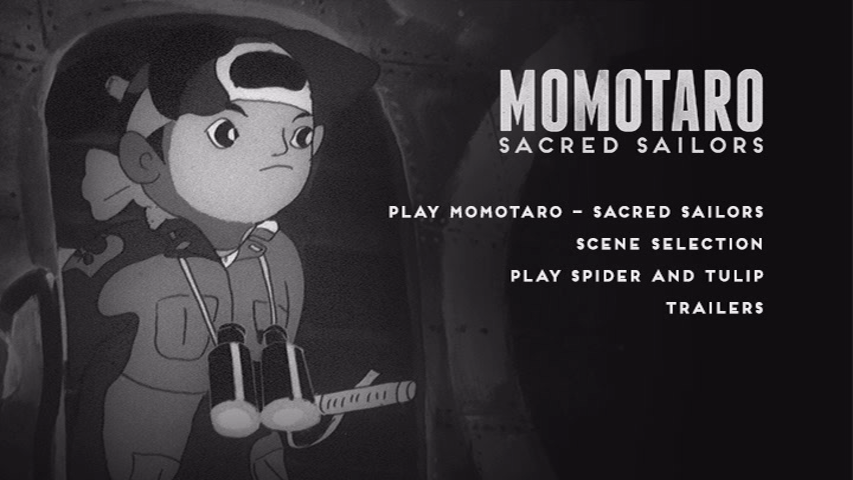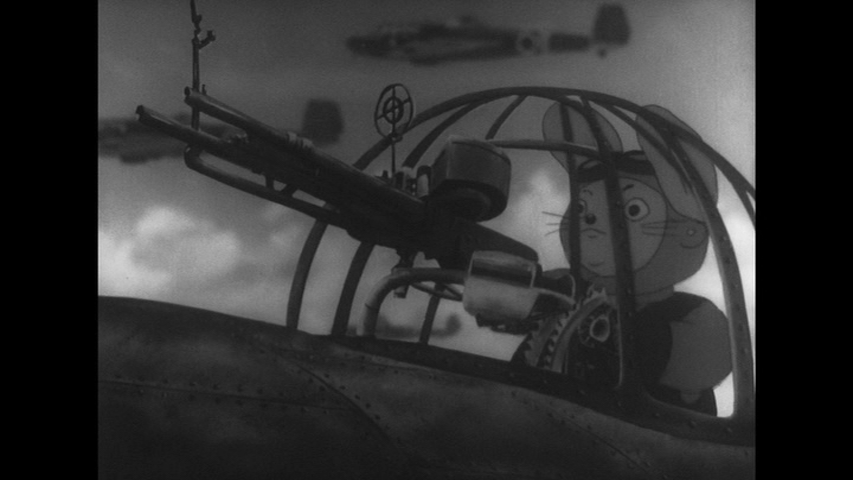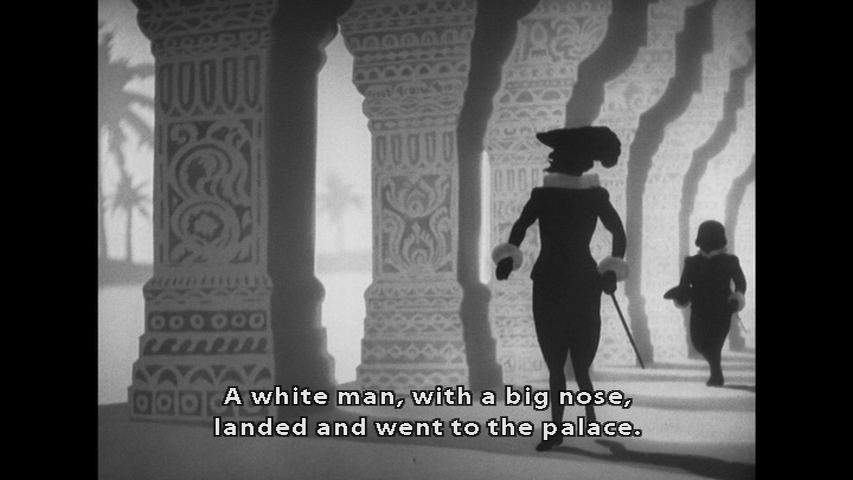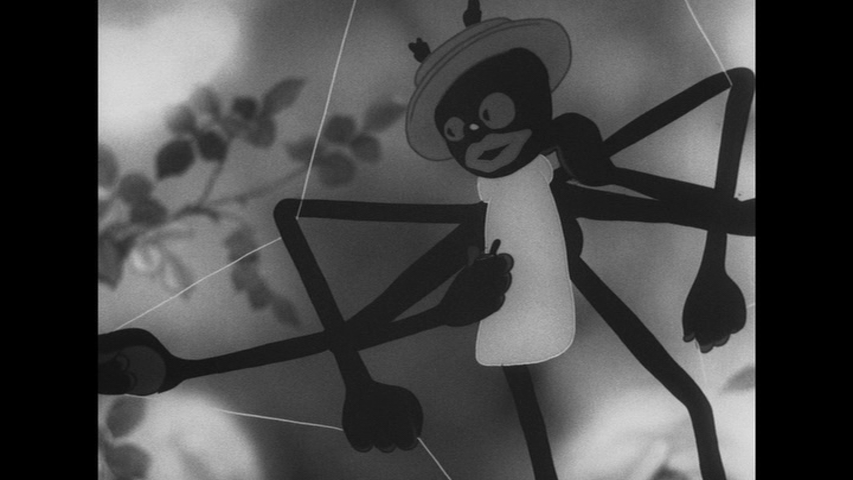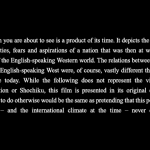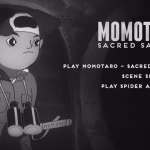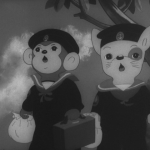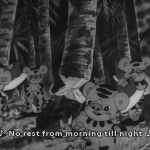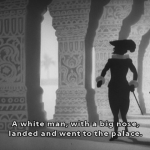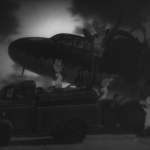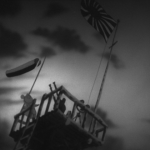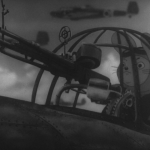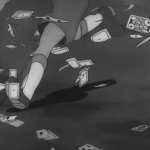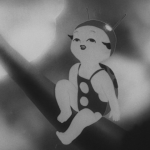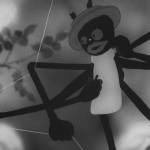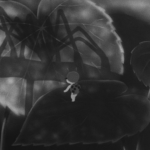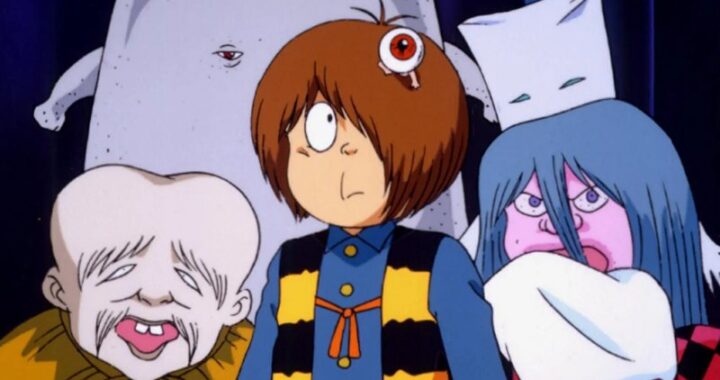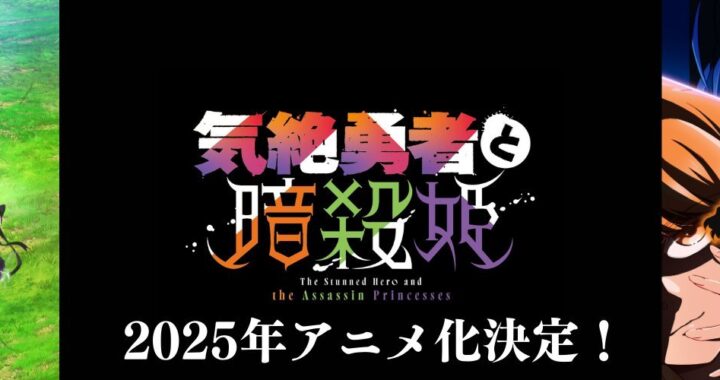What They Say:
Lost in the war, restored to the world of anime.
Setting the stage for the rise of anime, Momotaro, Sacred Sailors was Japan’s first feature-length animated film. A notable accomplishment for its time, the project was funded by the Navy Ministry of Japan during World War II. Now beautifully restored, this film is preserved as a milestone of the industry and a historical artifact of the war.
The hero of many Japanese folktales, Momotaro and his animal friends demonstrate patriotism and the importance of communal efforts to young audiences. Standing at the forefront of the country’s war endeavors, he oversees work at a base and bravely commands an air raid on enemy forces.
Included in this historical restoration is Spider and Tulip. An early masterpiece of Japanese animation, its influence can be traced through the works of many artists to this day.
The Review:
Packaging:
Packaging maintains the historical significance of the movie, composed solely of screencaps from it and accompanied with simple light orange text that pairs well with the dark blue shading used as the cover’s background. An O-card of the same cover work accompanies the standard BD packaging.
The back cover description provides some nice historical as well as cultural context for which to watch the movie in, quickly going over how the movie was made during WWII as well as a brief explanation of Momotaro for anyone not in the know. What’s most interesting about this back cover summary is that it really seems to describe the movie itself from the perspective of those meant to watch it back in early 1940s Japan. Nowhere on the box does it describe the movie as propaganda in any way, instead focusing on Momotaro’s heroics and the positive messages one can take away from the film itself.
One could argue this is in clear disregard for the atrocities involved in all wars, though the inside pamphlet that comes with the release does take a surprising amount of time covering any and all analysis and historical significance that the back cover’s synopsis tiptoes around.
My one main gripe is the release as a whole seems to tack on the Spider and Tulip short film as more of an afterthought than anything else. No screenshots of the film are on the cover, and it’s barely mentioned in the pamphlet which is disappointing considering how equally significant (and arguably more timeless) it is.
Menus for both the DVD and BD versions are nearly identical, with the main menu being a static image accompanied with the standard navigation prompts. Since there is no dub track on this release, both movies default to Japanese audio, subtitled in English.
Extras:
No extras outside of Funimation trailers were included in this release.
Content: (please note that content portions of a review may contain spoilers)
Let’s all just stop and take a moment to consider that in this year of 2017 I’m able to review a piece of Japanese war propaganda from the 1940s at relative ease due to having it be released by Funimation (remastered!) in a Blu Ray / DVD combo pack. Considering how Funi in general has been very safe with the majority of their releases either being an action or fanservice anime, I’m glad to see them experimenting with a release like this and hope this starts a trend of similarly-aged releases (probably asking for a lot, so I’d settle for something from at least the ‘70s).
Before getting into the story of Momotaro Sacred Sailors, it’s interesting to note how this release provides some excellent backstory via its provided pamphlet, setting the stage for not only the war, but for the creative staff involved in animating such a notable piece of history. Directed and primarily created by Mitsuyo Seo, he didn’t set out to create some paltry throw-away propaganda film. And while he was heavily under pressure by his country to either us his “skills in military service, find another line of work in a starvation economy, or be sent to the front,” his attempt at creating a movie that viewers can look at from beyond a propaganda piece shows. The movie itself definitely doesn’t stand well on its own especially by today’s standards, but regardless, being able to pick apart those key moments of shining beauty among the bouts of censorship and nationalism gives the movie some merit (Leiji Matsumoto and Osamu Tezuka’s appreciation for it helps, too).
The movie starts off in a peaceful animal village—an anthropomorphic dog, rabbit, bird, and monkey returning to their homes for a brief period of peace before having to return to the front lines. As cutesy as the setting and its characters are, it’s interesting to note that the designs of each character have distinctly Asian features. The almond eyes and small faces centered onto the round heads of each character not only provide a disturbing amount of expression for viewers to relate to, but of course also serve as a means for Japanese audiences to better insert themselves into the character’s situations in the first place, as you follow them from home, back to base, and eventually the battle field.
Ultimately, the goal for this movie is to encourage young viewers to not only support the war, but join its efforts via the army and other means. However, one scene early on seems particularly against this notion, lasting only a few seconds but serving as the most emotionally weighty of the movie. Spending time with his little brother in a field, the monkey army recruit stares off into the distance at nothing particular. It’s in this moment that he begins hearing the sound of airplane engines—keeping a stoic face throughout his apparent recollection. The moment is probably as close to addressing the ugly horrors of war as Seo could get without getting found out by his superiors, but it speaks volumes with so little.
Similarly, various shots of the planes late in the day are beautifully shot regardless of the underlying message it delivers. It’s also interesting to note that given the low budget of the film, Seo had to repeatedly wipe his animation cels clean once they were transferred to film. It’s in this use and reuse of the same cleaned cels that brought upon a dark, murky feel to the film. And yet, Seo was able to take this literal degradation in stride, using it to better set up the mood he was going for as the scene moves into its final act.
Following a middle segment clearly glorifying work at an assembly line, we’re met with a final act and finale that while the most outdated of the movie, is also the one that most warrants picking this up. Transitioning from its middle to final act, one sequence animated by Kenzo Masaoka is done entirely in silhouette, taking reference from actual footage to capture accurate movement—it’s artful in its direction and storytelling. And besides having the characters in this scene notably human instead of anthropomorphic, it’s where the movie begins to amp up its propaganda. Suddenly we’re given backstory on these white, large-nosed, deceitful devils—the movie’s clear villains. And as the movie’s heroes board their planes alongside the unnamed but clearly Momotaro and chute into enemy territory, the amount of tension is palpable in the small enclosed planes. And once battle breaks out, you’re ready to cheer for these cutesy animals, cold-heartedly taking out the wobbly-limbed foreigners and leading their country on to the path of victory. It’s such a long shot from where the movie started off, but the downright cheesiness and blatant anti-American sentiment it finishes off with is enjoyable just for how dated it is. It’s twisted, manipulative, and horribly nationalistic, but such a time capsule in itself that you need to see it yourself.
As for how the short film Spider and Tulip has fared, as a story itself it feels like something straight out of a children’s book. The untrustworthy (and horribly blackfaced) spider wreaks havoc among a field of flowers, trying to capture a ladybug into his web. The spider comes off as amiable at first, but soon shows his true colors the more the ladybug insists on leaving his presence. It stands well on its own as a story and is beautifully shot, with an equally admirable cast. For something now almost 80 years old, it’s amazing to hear the emotion and lack of cheesiness in both the innocent ladybug and trickster spider. And even with how small the stakes are, you really do feel for the ladybug as the spider further pushes himself onto her. It’s just, well… kinda racist.
In Summary:
Momotaro: Sacred Sailors was clearly a product of its time that modern viewers would definitely enjoy more from an analytical standpoint than anything else. Though while heavily submerged in war propaganda, it’s interesting to note that as a movie itself it’s still not half bad—its creators clearly still making an effort to form a single enjoyable story regardless of the creative restrictions they were given. If anything, however, I would say Spider and Tulip better withstands the passage of time. Character designs aside, the 15-minute short is still able to tell a timeless story akin to something you’d read to a child before bed. Its visuals and voice work are solid for something now nearly 80 years old as of this writing, and I only regret it not receiving nearly as much praise in this release as it deserves.
Features:
Japanese Dolby TrueHD 2.0 Language, English Subtitles
Content Grade: B
Audio Grade: B
Video Grade: A
Packaging Grade: A
Menu Grade: A
Extras Grade: N/A
Released By: Funimation
Release Date: May 9, 2017
MSRP: $34.98
Running Time: 90 Minutes
Video Encoding: 1080p High Definition (HD Native), 480 Standard Definition
Aspect Ratio: 4:3
Review Equipment:
Samsung UHD 6700 64” Curved Smart TV, Sony Blu-ray player BDP-S6500 via HDMI set to 1080p


